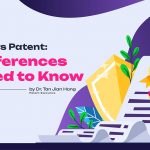IN 2013, actress Angelina Jolie had a preventive double mastectomy after tests confirmed she had a BRCA1 gene mutation, which greatly increased her risk of developing breast and ovarian cancer. She noted that the tests were out of reach for most women due to its high cost (US$3,000) charged by Myriad Genetics, which holds multiple patents for the BRCA gene sequence.
The initial breakthrough linking breast cancer to a gene identified its location but not the sequence. It came from collaboration by scientists mostly funded by government grants via the International Breast Cancer Linkage Consortium.
Dr Mark Skolnick, Myriad’s founder then mobilised venture capitalists to fund its successful efforts to identify and quickly patent the BRCA1 sequence.
After securing the patents, Myriad sent “cease and desist” letters to potential competitors, including researchers and clinicians.
Using such practices, Myriad monopolised the market for BRCA gene testing even though similar unpatented tests cost as little as US$100.
The United States Supreme Court eventually invalidated the BRCA gene patents. Several competitor tests emerged but Myriad continues to dominate the market, emphasising the size and accuracy of its database built over 20 years of genetic testing. The American College of Medical Genetics and Genomics is currently calling on Myriad to share its proprietary data to aid gene tests.
Patents, a form of intellectual property rights (IPRs), are said to be necessary to incentivise innovation and recover research and development (R&D) costs by creating a temporary legal monopoly.
Before the US withdrew from the Trans-Pacific Partnership (TPP), TPP provisions would have extended IP protections to cover “biologics” (naturally occurring substances such as insulin for diabetes patients).
These provisions were suspended in the successor, Comprehensive and Progressive Agreement for Trans-Pacific Partnership (CPTPP) following the US withdrawal. But they can easily be reinstated, for example to entice the US to rejoin.
Private companies eager to extend their monopolies try to “evergreen” them by registering “follow-on” patents involving minor variations closely linked to the original invention. Through evergreening, the patents system has been used by companies to create long-term monopolies in order to charge exorbitant prices, for example in the US pharmaceutical industry.
Others engage in “patent trolling”, i.e. obtaining many patents to profit from litigation or licensing without inventing anything or making products of their own. Trolling enables patent owners to blackmail those in need to their patents, sometimes by creating “patent thickets” (webs of overlapping IPRs) and related bottlenecks, limiting the use of patented knowledge and effectively hindering further innovation.
Through various means, US-style IPR regimes have spread worldwide since the adoption of the World Trade Organisation’s (WTO) agreement on Trade-Related Aspects of Intellectual Property Rights (TRIPS).
Under TRIPS, all WTO members have to provide a minimum level of IPR protection which includes, among others, patent protection for a minimum of 20 years for imported IPRs registered in other countries.
TRIPS also stipulates conditions for using the “compulsory licence” concession that allows governments to license the use of a patented invention to a third party or government agency without the consent of the patent holder.
There is moot evidence that TRIPS benefits developing countries by attracting foreign investment, promoting technological transfer and increasing innovation.
Instead, TRIPS has imposed substantial, avoidable costs on developing countries.
Where developing countries have made use of the TRIPS concessions, they have faced international pressure from pharmaceutical giants and their governments to limit, if not eliminate, the scope of these exceptions.
Malaysia is the first country to use this concession to produce sofosbuvir, a drug used for hepatitis C treatment. The drug, produced by patent owner Gilead, costs up to RM300,000 for the full course while treatment using generic substitutes costs approximately RM1,000. The US pharmaceutical industry has applied pressure on Malaysia to stop using this compulsory licence concession.
Developing countries are generally unable to check the monopolistic practices of transnational pharmaceutical conglomerates due to underdeveloped antitrust regimes, weak law enforcement capacities and their influential partners.
Such companies may “repackage” medicinal products and processes from developing countries’ “traditional knowledge systems” to secure patents on them, including biologics. An example is turmeric, which is widely used in India for medicine, food and dye, among others. In 1995, the US granted the University of Mississippi Medical Center a patent for the use and administration of turmeric powder to heal wounds, granting it an exclusive right to sell and distribute turmeric.
The Indian Council for Scientific and Industrial Research (CSIR) objected, arguing that turmeric had been so used in India for centuries and provided historical references in Sanskrit, Urdu, Hindi and other languages to back its claim. The US patent was eventually revoked because it lacked the “novelty” element, but it required herculean efforts.
Developing countries are also no longer able to benefit from informal technological transfer, further limiting their ability to develop their own technological capacities and capabilities. In their paper Innovation, Intellectual Property And Development, Dean Baker, Arjun Jayadev and Joseph Stiglitz suggest alternatives to private IPRs to incentivise innovation especially in the US: direct financing of R&D through centralised mechanisms; decentralised funding of R&D through tax credits for research institutions, or tax deductions on donations for research; creating more prizes that do not limit subsequent competition from generics; and establishing open source platforms to promote the free flow of knowledge.
Source from: CLAIRE LIM , Kuala Lumpur
https://www.thestar.com.my/opinion/letters/2020/02/10/high-cost-of-intellectual-property







Comments are closed.